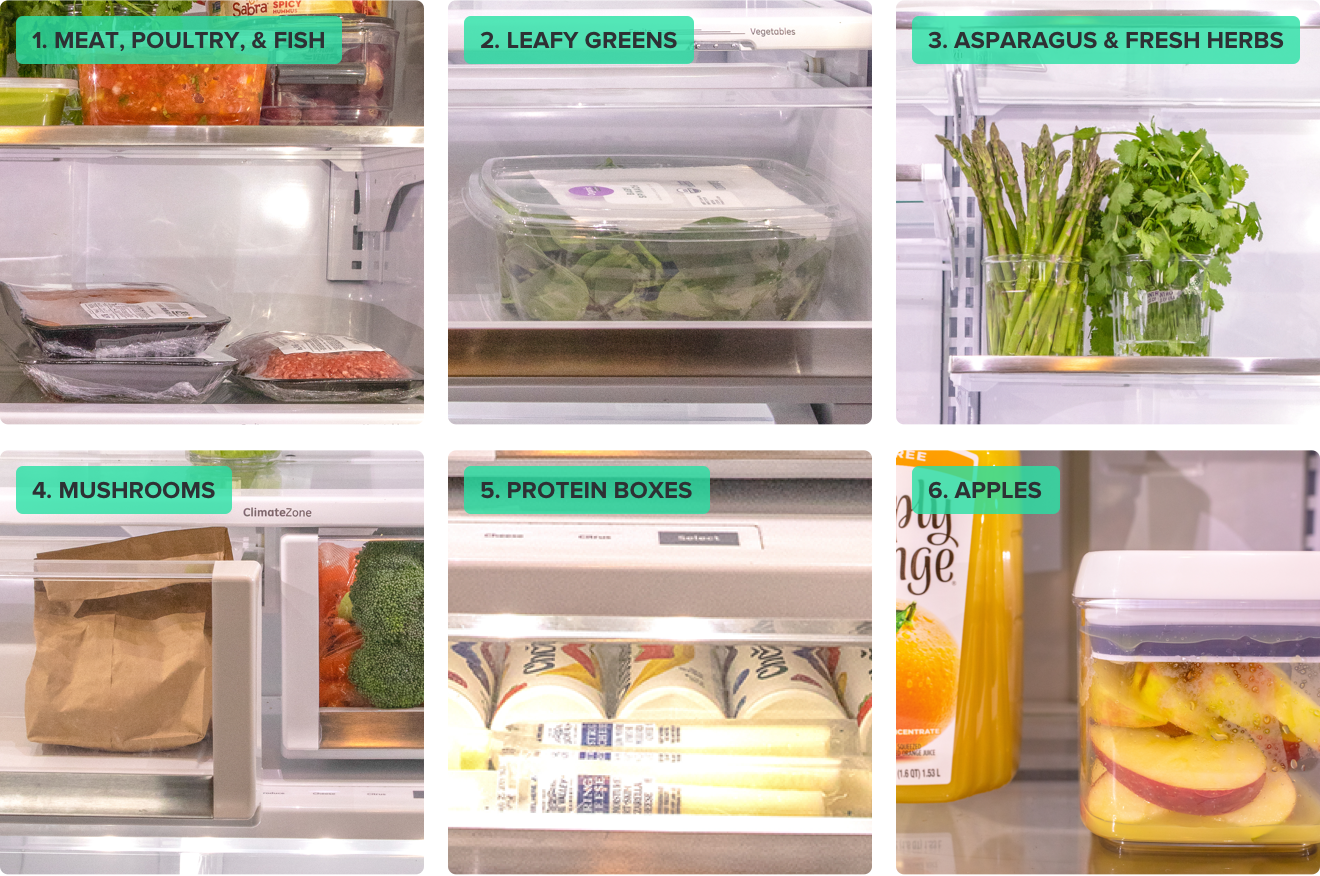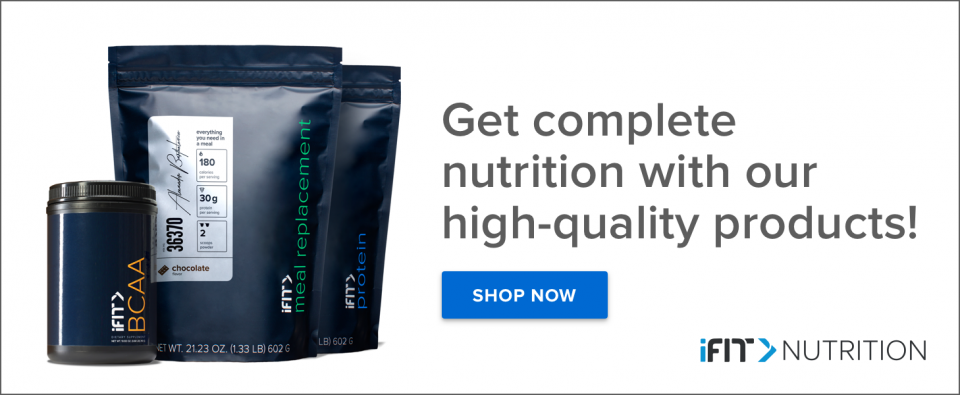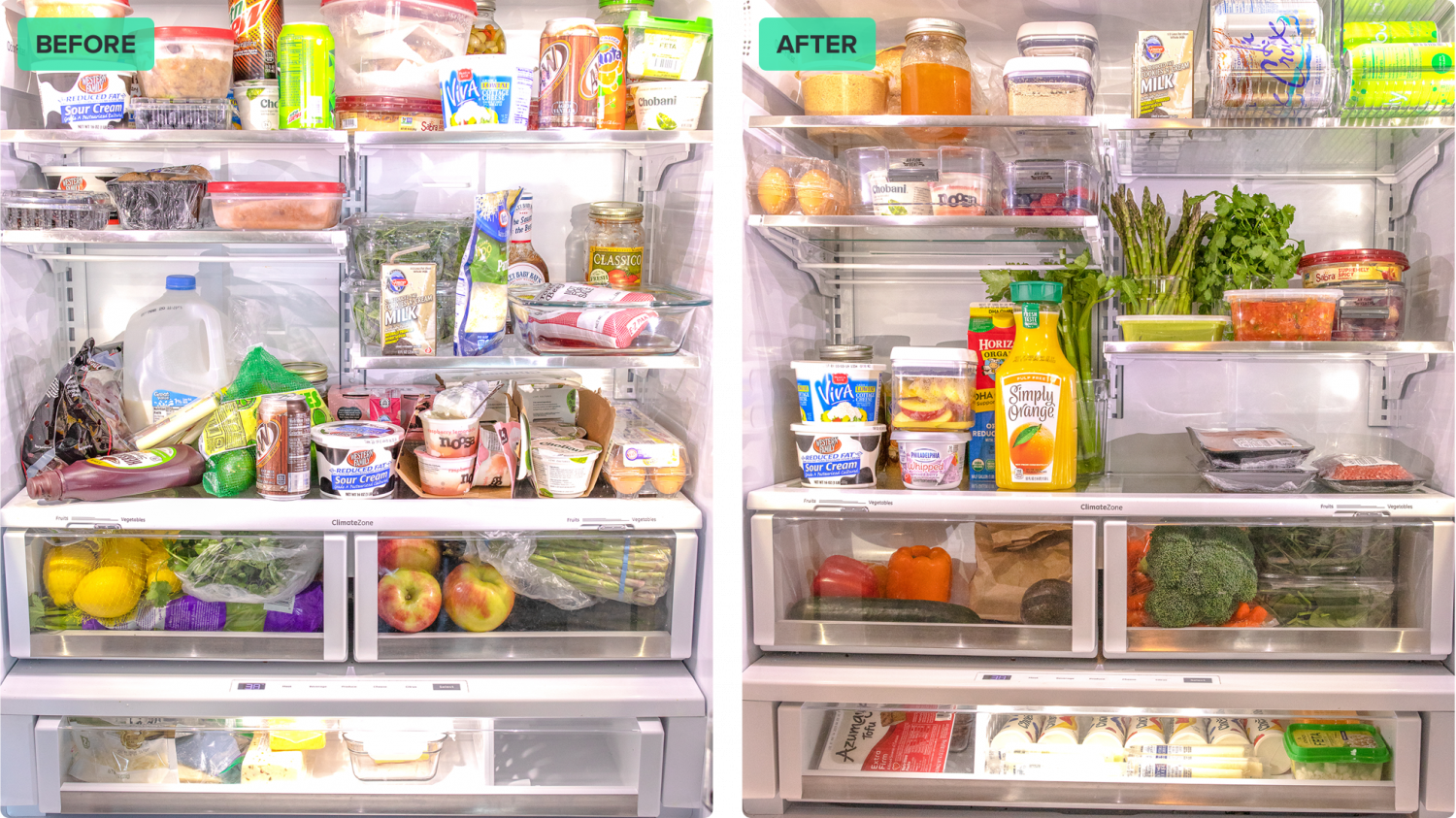
One key component of eating healthy that is often overlooked is organization. I am not talking about meal planning (although that helps), but organizing your pantry and fridge to make a healthy choice an easy choice. This post is all about how to organize your fridge, so you can make healthier food choices and avoid food waste.
Love our look? Here is a list of the items we used to organize, as well as some additional iFit favorites.
Proper food storage
First, let's talk about what should go in the fridge, what should go in the pantry, and how to best store your food for prolonged freshness. Oftentimes, incorrect storage can lead to decreased shelf life and deflated, limp produce. Fresh, healthy food is so much more appetizing, so make sure you are storing it correctly.
Separate High-ethylene produce
- There are fruits and vegetables that produce ethylene gas as they ripen, including apricots, avocados, bananas, cantaloupes, kiwis, nectarines, tomatoes, mangos, peaches, pears, and plums.
- Keep these ethylene-producing items away from ethylene-sensitive items such as apples, asparagus, broccoli, carrots, cucumbers, and leafy greens.
Your fridge storage

- Meat, poultry, and fish: Store at the bottom of the fridge, so potential leakage doesn’t result in cross-contamination and food-borne illnesses.
- Leafy greens: Place a paper towel in whatever container is housing your greens. Absorbing excess moisture with a paper towel will prevent soggy greens (yuck!). When the paper towel seems too wet, replace it.
- Asparagus and fresh herbs: Treat them like flowers. Trim the ends and place them in a jar of water for prolonged freshness.
- Mushrooms: Prevent slimy mushrooms by placing them in a paper bag to absorb excess moisture. Avoid storing next to foods with strong odors, as they do absorb flavors.
- Protein boxes: Store protein boxes in clear containers. Place them at eye level, so they are the first thing you see. Check out our protein boxes for some healthy inspiration!
- Apples: Distribute an orange juice and water mixture over precut fruits, like apples, to keep them from turning brown.
- Butter: Store in its original wrapping. The specially lined paper prevents light exposure, and the surrounding food odors that butter can absorb. Properly wrapped butter can also be stored for up to a year in the freezer.
- Keep potatoes, tomatoes, onions, lemons, and limes out of the fridge (see more pantry tips here).
- Wrap and freeze fresh ginger and fresh turmeric for up to six months. No need to defrost—just take it out and use it right away!
- Do not wash berries or grapes until right before consuming.
- Avoid waste by utilizing clear containers to store your food, so it's easy to see what is inside (this is especially good for leftovers).

Food storage can be a tricky thing, but when executed well, you'll be shocked at how much less food you waste, how much money you save. Plus, it will be so much easier for you to make healthy food choices! We hope you will incorporate all or some of these tips into your kitchen. If you do, please be sure to tag @iFit in a photo of your organized kitchen!
If you're interested in learning about how to best organize your pantry, be sure to visit our pantry organization storage article.
Good luck!

You might also like

BenefitHub
Access exclusive pricing to iFIT’s top brands, only available through your BenefitHub program.
September 19, 2020

Beneplace
Access exclusive pricing to iFIT’s top brands, only available through your Beneplace perks program.
September 19, 2020

VennGo
Access exclusive pricing to iFIT’s top brands, only available through your VennGo program.
September 19, 2020
